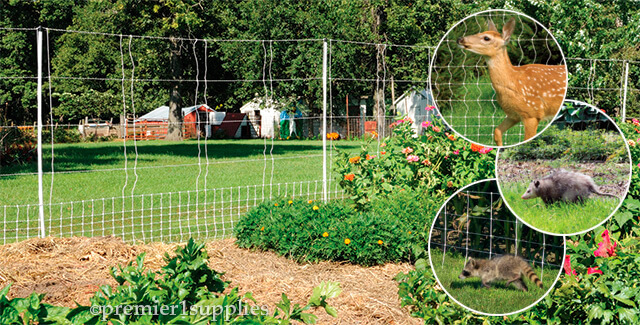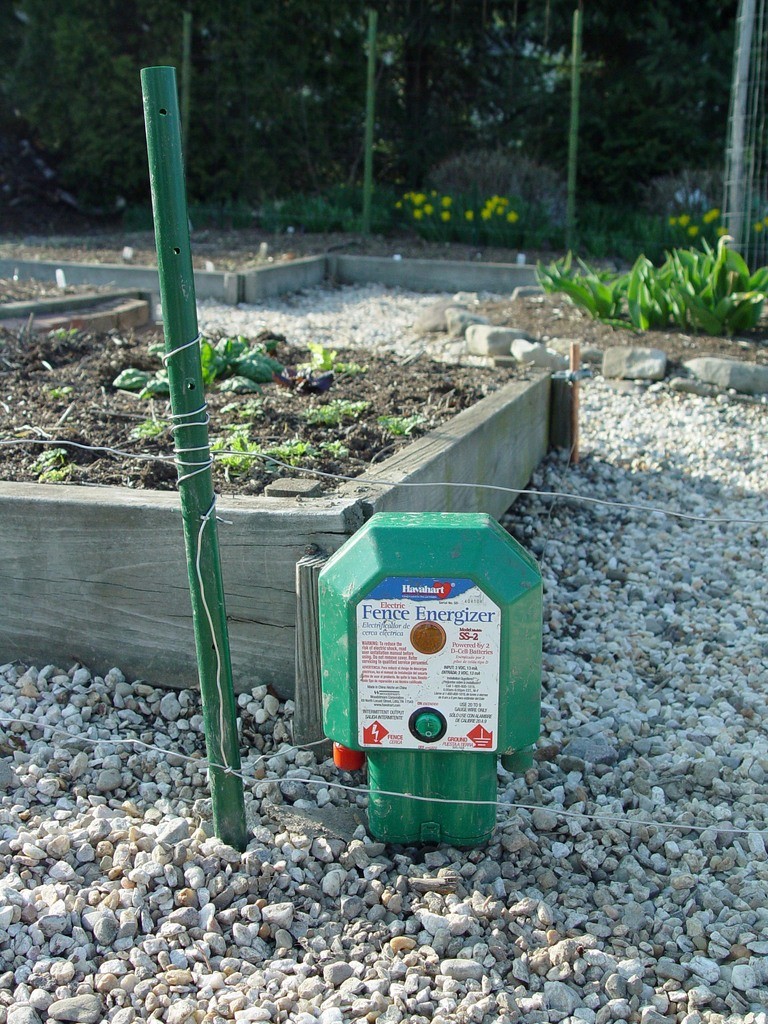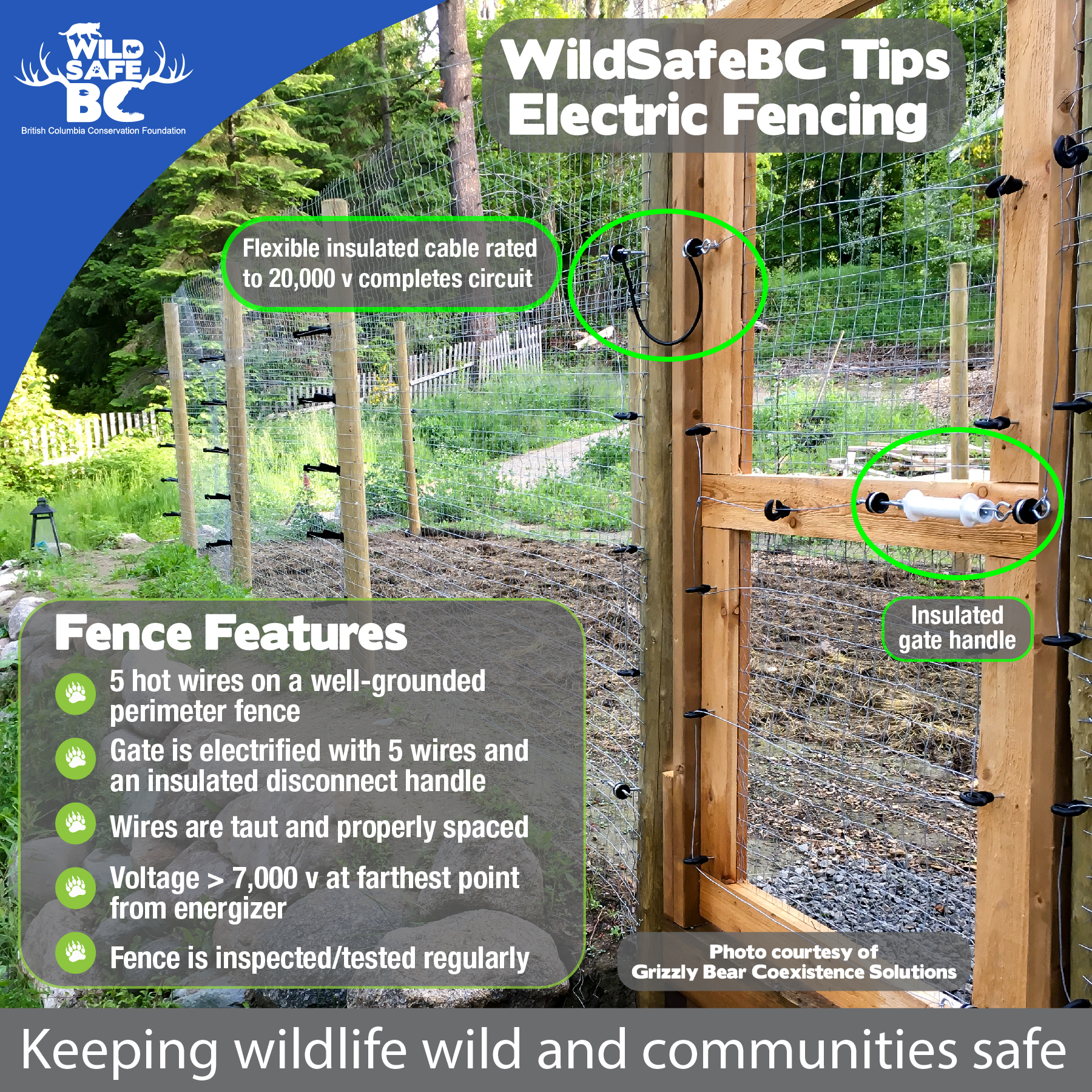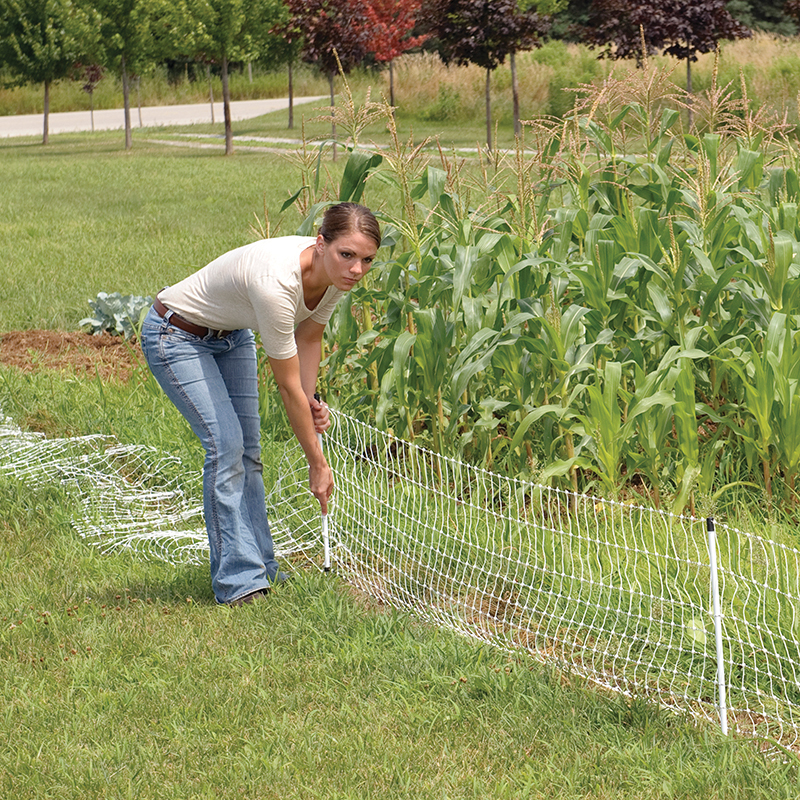Do you have a garden that needs some extra protection? Have you ever considered electric garden fencing? It’s a great way to keep unwanted animals out and protect your plants. In this article, you’ll learn all about electric garden fencing and how it can benefit you. From installation tips to maintenance advice, we’ve got you covered. So, keep reading to discover how this innovative fencing option can make a difference in your garden.
When it comes to electric garden fencing, there’s so much to explore. We’ll delve into the different types of electric fences available, such as net fencing and wire fencing, and discuss their pros and cons. You’ll also find out how to properly install and maintain your electric fence to ensure its effectiveness. We’ll even address common questions and concerns, like safety precautions and the impact on wildlife. With our comprehensive coverage, you’ll become an expert on electric garden fencing in no time. So, get ready to transform your garden into a protected oasis with our helpful tips and advice.
All About Electric Garden Fencing

Introduction
If you are looking to enhance the security and functionality of your garden, electric garden fencing can be a game-changer. This modern fencing option provides numerous advantages over traditional fencing methods, making it an increasingly popular choice among homeowners and garden enthusiasts. In this article, we will delve into the world of electric garden fencing, exploring its components, installation process, maintenance, and troubleshooting. We will also discuss the proper use and safety precautions, comparing it with traditional fencing, exploring its various applications, legal guidelines, environmental impact, and provide tips on how to choose the right electric garden fence. So, let’s dive in!
What is Electric Garden Fencing?
Electric garden fencing is a strategic combination of electrified wire, suitable posts, and an energizer, designed to create a barrier system to contain or exclude animals and protect the garden from unwanted intruders. Unlike traditional fences made of wood, metal, or other materials, electric garden fencing relies on low-intensity electric shocks to deter animals and humans from crossing the fence. This innovative technology is efficient, effective, and provides a flexible and cost-effective solution for garden owners.

Advantages of Electric Garden Fencing
Electric garden fencing offers several advantages over traditional fencing methods. Here are some key benefits to consider:
-
Cost: Electric garden fencing is often more affordable compared to traditional fencing, thanks to its minimal material requirements.
-
Installation Time: Setting up electric garden fencing can be quicker and easier than installing traditional fences, saving you time and effort.
-
Flexibility and Portability: Electric fences can be easily moved or adjusted according to your changing needs, offering greater flexibility compared to fixed traditional fences.
-
Effectiveness: Electric garden fencing delivers a safe yet strong deterrent against animals and intruders, making it highly effective in protecting your garden.
-
Enhanced Security: With the capability to deliver mild electric shocks, electric garden fencing adds an additional layer of security to your property.
Components of Electric Garden Fencing
To understand electric garden fencing better, let’s dig into its key components:
Electric Fence Energizer
The electric fence energizer, also known as a charger or controller, is the heart of an electric garden fence system. It supplies power to the fence wire and delivers aggressive yet non-lethal electric pulses, creating an effective deterrent. Energizers come in various types, including battery-operated, solar-powered, and plug-in options, offering flexibility for different needs.
Grounding System
A proper grounding system is essential for the effective operation of electric garden fencing. It allows the energizer to complete the electrical circuit and deliver the desired shock to animals or intruders. Grounding systems typically include galvanized ground rods, copper grounding wire, and grounding clamps.
Insulators
Insulators are crucial components that keep the electric fence wire from coming into contact with other objects or the ground. They are made of non-conductive materials such as plastic or porcelain and are attached to the fence posts. Insulators ensure that the electricity flows through the wire effectively and prevent short circuits.
Fence Wire
Electric garden fencing uses specially-designed electrical wires that carry the electric charge. These wires are resistant to weather conditions, UV radiation, and animal interference. Common types of fence wires include steel wire, aluminum wire, and polywire.
Posts
The choice of fence posts determines the stability and durability of your electric garden fence. Posts should be sturdy enough to withstand tension from the fence wire and any external forces. Options include wooden posts, steel T-posts, fiberglass posts, and plastic posts.

Installation Process
Now that we understand the components of electric garden fencing, let’s discuss the installation process step by step:
Choosing the Right Location
Before installing the electric garden fence, carefully choose the location based on your garden’s size, layout, and the level of protection needed. Consider factors such as accessibility, proximity to power sources, and the presence of any underground utilities.
Preparing the Ground
Clear the area of any obstacles, rocks, and debris that could interfere with the fence installation process. Trim any overhanging vegetation and ensure a clear pathway for the fence wire.
Setting Up the Fence Posts
Install the fence posts at regular intervals, ensuring they are securely anchored into the ground. The spacing between posts depends on the type of animals you aim to deter and the terrain of your garden.
Attaching the Insulators
Fix the insulators onto the fence posts, following the manufacturer’s instructions. Ensure they are properly aligned and spaced to provide adequate support for the fence wire.
Installing the Fence Wire
Attach the fence wire to the insulators, ensuring it is properly tensioned. Be cautious while handling the wire, as it will carry an electric charge once connected to the energizer.
Connecting the Electric Fence Energizer
Connect the electric fence energizer to the fence wire, following the manufacturer’s instructions. Refer to the energizer’s manual for details on proper wiring and connection methods.
Testing the Fence
Before relying on the electric garden fence, perform a thorough test to ensure its effectiveness. Use a fence tester to check for voltage levels and any potential issues, making adjustments as necessary.
Maintenance and Troubleshooting
Proper maintenance and troubleshooting play a vital role in ensuring the longevity and effectiveness of your electric garden fencing. Here are some key points to consider:
-
Regularly inspect the fence posts, wires, and insulators for damage or signs of wear. Replace any worn-out components promptly.
-
Trim vegetation surrounding the electric fence to prevent interference and potential short circuits.
-
Periodically check the electric fence energizer to ensure it is functioning correctly. Test the voltage output and battery life as recommended by the manufacturer.
-
Address any issues promptly, such as wire breaks, damaged insulators, or energizer malfunctions, to maintain the integrity of your electric garden fence.

Common Issues with Electric Garden Fencing
Despite their effectiveness, electric garden fences can face challenges. Here are some common issues you may encounter:
Fence Grounding Problems
Improper grounding can lead to reduced voltage levels and ineffective electric shocks. Ensure your grounding system is properly installed and periodically check for any loose connections.
Wire Breaks or Damage
Extreme weather conditions, accidental damage, or animal interference can cause wire breaks or damage. Regularly inspect and repair any broken wires to ensure the fence’s effectiveness.
Energizer Malfunction
Energizer malfunctions can occur due to power outages, faulty connections, or battery issues. Regularly check the energizer’s functionality and address any malfunctions immediately.
Unauthorized Access
Intruders may attempt to bypass or disable your electric garden fence. Consider adding additional security measures such as security cameras or alarm systems to deter unauthorized access.
Proper Use and Safety Precautions
While electric garden fencing is safe when used correctly, it is crucial to follow proper safety precautions. Here are some important points to keep in mind:
Keeping Children and Pets Safe
Educate children and pets about the electric fence’s potential hazards. Install warning signs to alert others about the presence of electrified fencing.
Avoiding Electric Shocks
Ensure your fence is operating within acceptable voltage limits to avoid potential harm. Follow manufacturer guidelines to set voltage levels that deliver a deterrent effect without causing harm.
Understanding Animal Behavior
Learn about the animals you aim to deter with your electric garden fence. Understand their behavior patterns and adjust the fence’s settings accordingly.
Proper Training and Supervision
If you have animals on your property, provide them with proper training to respect the electric fence’s boundaries. Regularly check their behavior and reinforce training as necessary.

Comparing Electric Garden Fencing with Traditional Fencing
Electric garden fencing offers several advantages compared to traditional fencing methods. Let’s compare them based on various factors:
Cost
Electric garden fencing is often more cost-effective than traditional fencing due to its minimal material requirements and easier installation process.
Installation Time
Setting up electric garden fencing can be quicker and more straightforward compared to traditional fencing, saving you time and effort.
Flexibility and Portability
Unlike fixed traditional fences, electric garden fencing offers flexibility and portability. It can be easily moved or adjusted, allowing you to adapt to changing needs or garden layouts.
Effectiveness
Electric garden fencing delivers a safe yet strong deterrent, making it highly effective in protecting your garden. Traditional fences may not provide the same level of deterrence.
Applications of Electric Garden Fencing
Electric garden fencing serves various purposes across different settings. Let’s explore some common applications:
Protecting Vegetable Gardens
Electric garden fencing helps keep hungry pests and animals away from your prized vegetable gardens, preserving the harvest and ensuring your hard work pays off.
Securing Livestock and Poultry
Farmers and ranchers rely on electric garden fencing to secure livestock and poultry. It provides a safe and effective containment system, preventing animals from wandering off or predators from entering.
Wildlife Deterrence
Electric garden fencing can be used to deter wildlife from entering sensitive areas such as conservation sites, gardens, or agricultural fields. It provides a non-lethal yet effective solution for wildlife management.
Enhancing Home Security
Electric garden fencing adds an extra layer of security to your property, deterring potential intruders from accessing your garden or home. It acts as a visible barrier and alerts you to any unauthorized access attempts.
Legal Guidelines and Restrictions
Before installing electric garden fencing, familiarize yourself with local and state regulations. Consider the following aspects:
Local and State Regulations
Check for any permits, licenses, or restrictions regarding the installation of electric garden fencing. Local and state regulations might outline specific guidelines to ensure safety and compliance.
Responsibilities of Fence Owners
Understand your responsibilities as a fence owner, including proper maintenance, regular inspections, and compliance with safety standards. Failure to fulfill these obligations could result in legal consequences.
Neighborhood Considerations
Consult with neighbors to avoid potential conflicts or disagreements regarding the installation or placement of your electric garden fence.
Permits and Inspections
Some areas may require permits or inspections before installing an electric garden fence. Research and adhere to the local regulations to avoid any legal complications.
Environmental Impact
While electric garden fencing provides numerous benefits, it is essential to consider its environmental impact. Let’s explore some key aspects:
Energy Consumption
Electric garden fencing relies on a power source to function, be it batteries, solar panels, or direct electricity. Ensure that your energizer’s power source is selected and utilized responsibly to minimize energy consumption.
Effects on Wildlife
Electric garden fencing has the potential to impact wildlife, particularly if improperly installed or used. Ensure that your fence does not harm protected or endangered species and consider alternative measures if necessary.
Eco-Friendly Alternatives
For those concerned about the environmental impact, consider eco-friendly alternatives such as motion-activated sprinklers or chemical-free repellents to deter animals from your garden.
Choosing the Right Electric Garden Fence
To ensure the effectiveness and longevity of your electric garden fence, consider the following factors:
Determining Fence Length and Height
Evaluate the perimeter of your garden or the area you wish to enclose. Based on the potential threats or animals you aim to deter, determine the appropriate fence length and height.
Selecting the Correct Energizer
Choose an energizer that matches your specific needs. Consider factors such as power source, output voltage, range, and estimated number of electric wires.
Considering Animal Type and Behavior
Research the animals you aim to deter and understand their behavior patterns. Adjust your electric garden fence settings and specifications accordingly to ensure optimal effectiveness.
Quality and Durability
Invest in high-quality components for your electric garden fence. Choose durable fence wire, sturdy posts, and reliable energizers to ensure the longevity and effectiveness of your fence.
Conclusion
Electric garden fencing has revolutionized the way we secure and protect our gardens. With its numerous advantages, simple installation process, and diverse applications, it has become an increasingly popular choice for homeowners and garden enthusiasts. By understanding its components, proper use and safety precautions, comparing it with traditional fencing, and considering its environmental impact, you can make an informed decision about implementing electric garden fencing in your own outdoor space. So, go ahead and transform your garden into a safe and thriving haven with electric garden fencing!